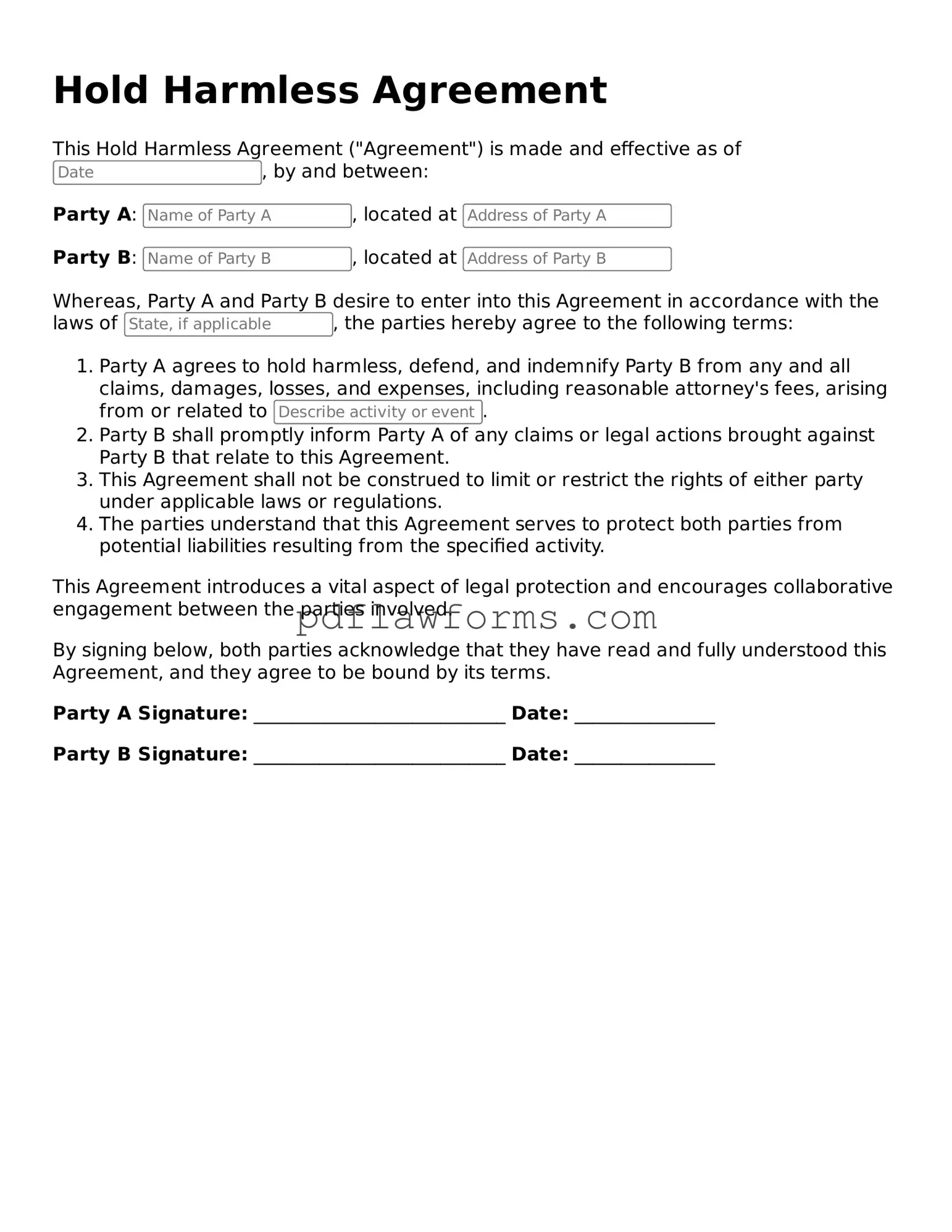When individuals fill out a Hold Harmless Agreement form, they often overlook critical details that can lead to misunderstandings or legal issues. One common mistake is failing to provide complete information. It is essential to include all relevant parties and accurate descriptions of the activities involved. Omitting even a single name or detail can render the agreement ineffective.
Another frequent error is neglecting to read the entire document carefully. Many people may skim through the text, missing important clauses or stipulations. This oversight can result in unexpected liabilities or obligations that the signers did not intend to accept.
Some individuals also forget to specify the duration of the agreement. A Hold Harmless Agreement should clearly state how long the terms will remain in effect. Without this information, the agreement may be open-ended, which can create confusion about responsibilities over time.
In addition, using vague language can be problematic. Phrases that lack clarity can lead to differing interpretations of the agreement. It is crucial to use precise terms to ensure that all parties understand their rights and responsibilities.
People often make the mistake of not having the agreement reviewed by a legal professional. While it may seem unnecessary, a lawyer can provide valuable insights and help identify any potential issues before the agreement is signed. Skipping this step can expose individuals to unforeseen risks.
Another mistake is failing to obtain signatures from all relevant parties. An agreement without proper signatures may not hold up in court. Each party involved must sign to acknowledge their understanding and acceptance of the terms outlined in the agreement.
Additionally, individuals sometimes do not keep a copy of the signed agreement. After signing, it is vital to retain a copy for personal records. This ensures that everyone has access to the terms agreed upon, which can be crucial in case of disputes.
Some people also overlook the importance of including a clause that addresses indemnification. This clause protects one party from being held liable for certain actions or claims. Without it, the agreement may not provide the intended protection.
Lastly, individuals may fail to update the agreement as circumstances change. Life events, such as changes in relationships or activities, can affect the relevance of the agreement. Regularly reviewing and amending the document ensures it remains applicable and effective.
